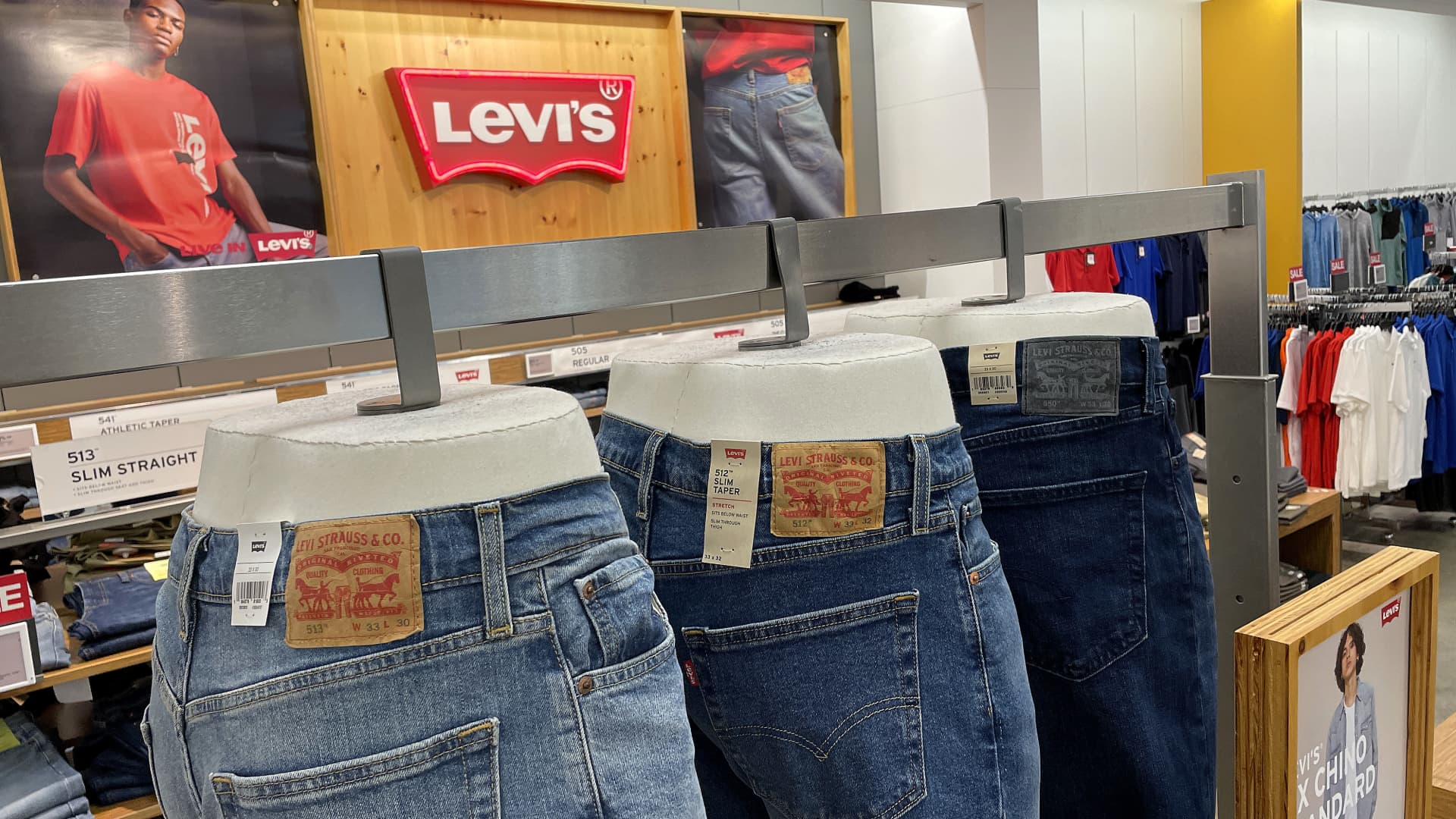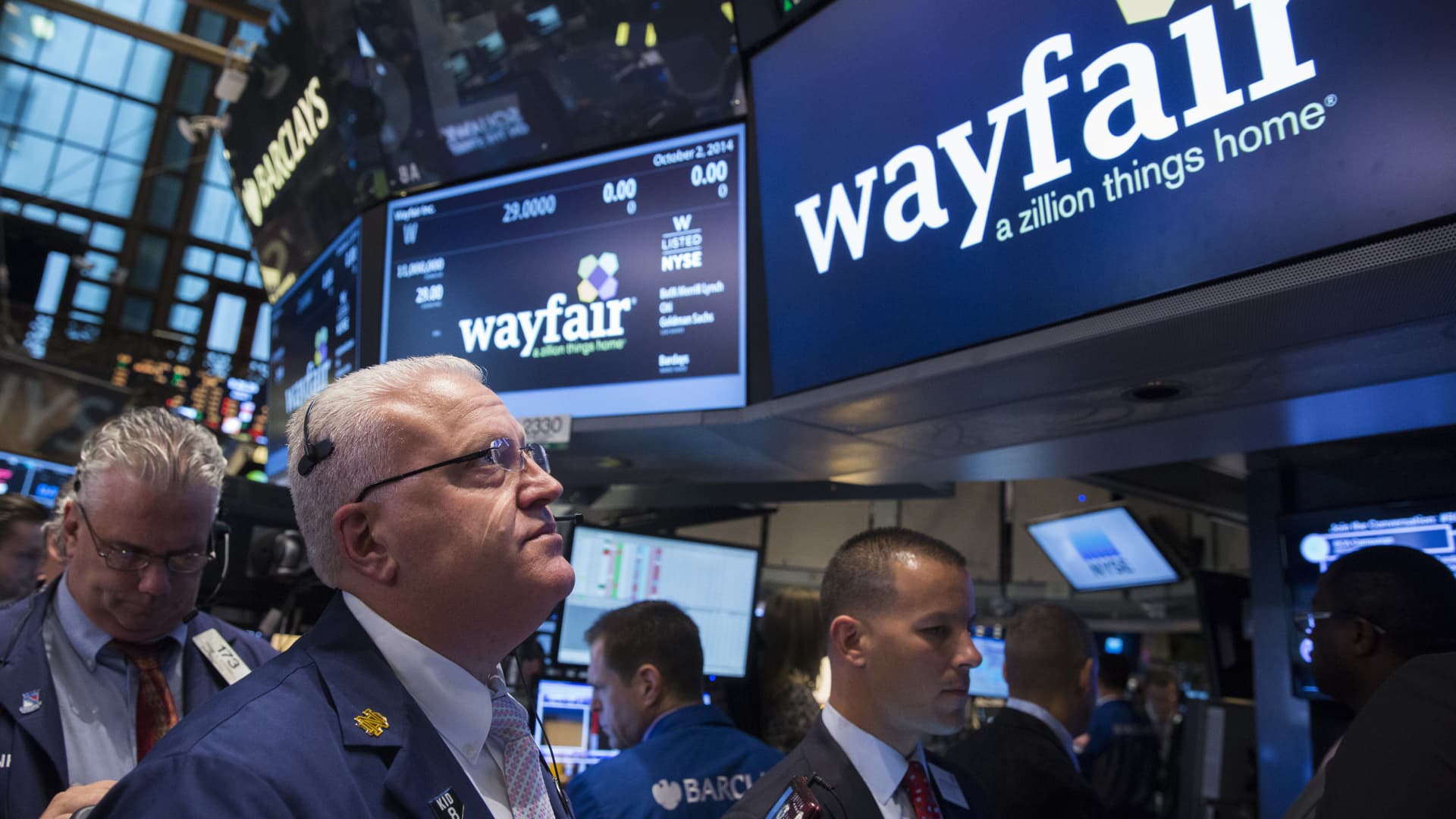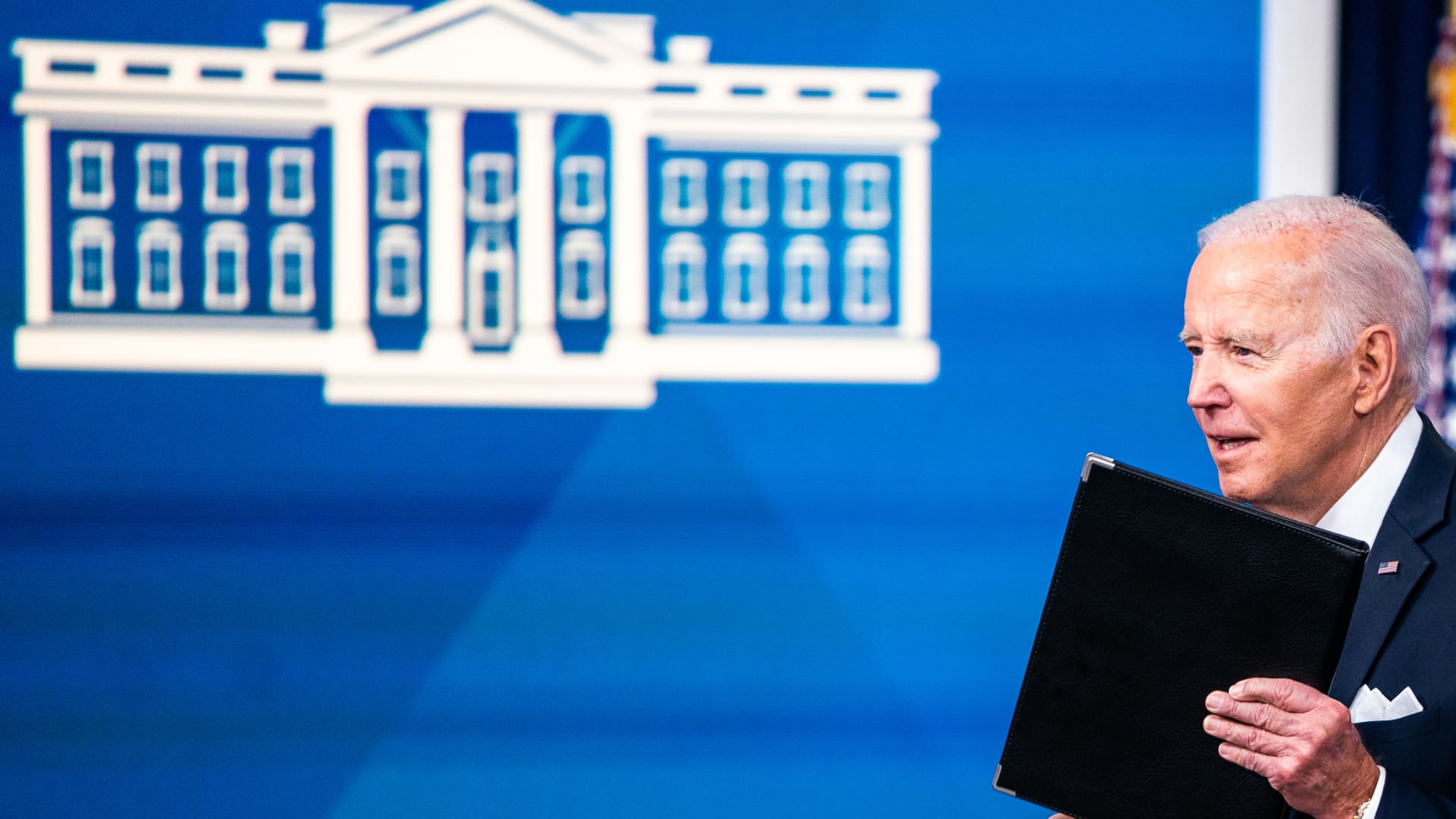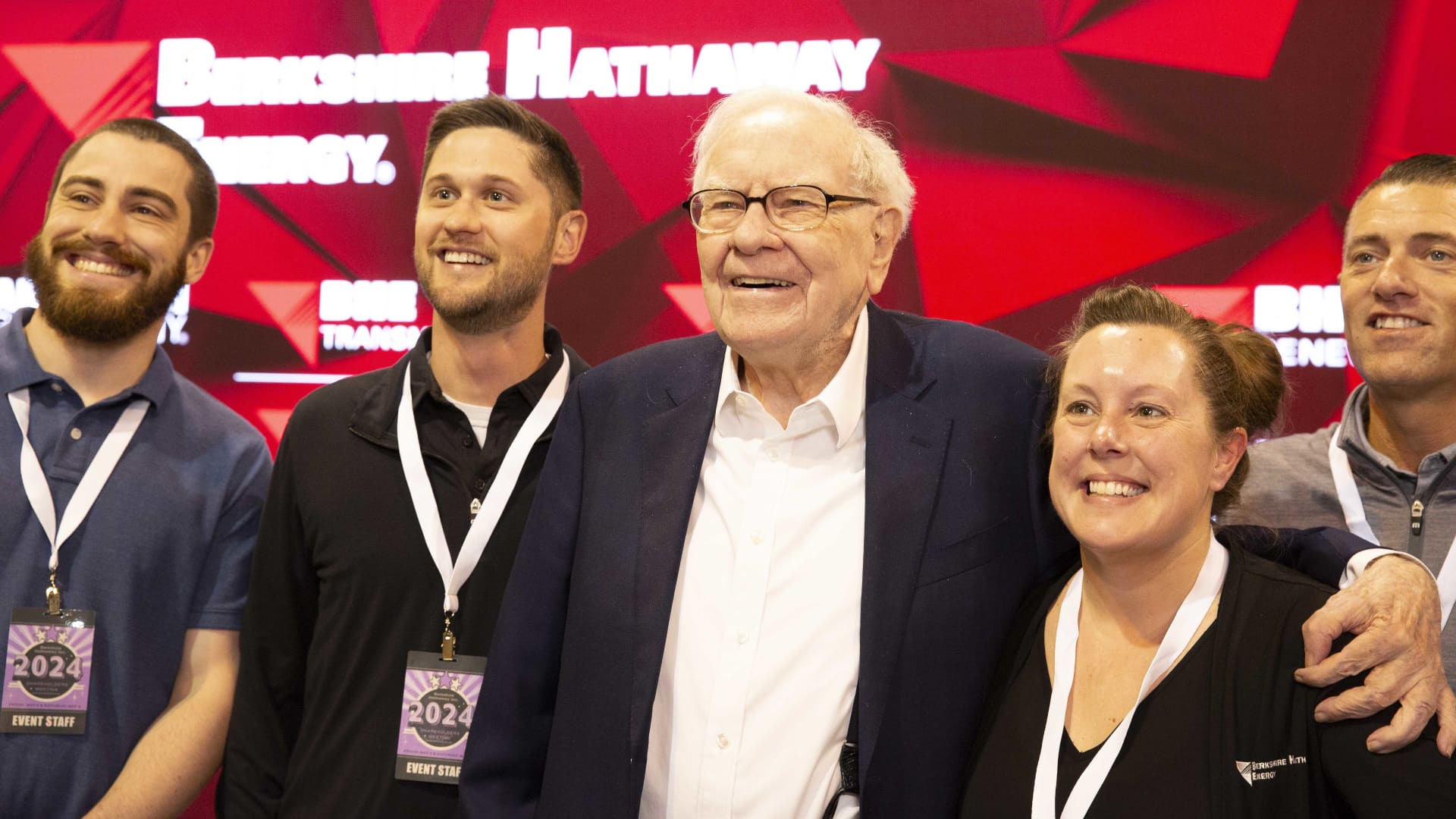Levi Strausswhich has long relied on wholesalers like Macy’s And Kohl’s To drive its business, the company now generates nearly half of its revenue through its own website and stores, the company said Wednesday when reporting first-quarter results.
In the three months ended Feb. 25, direct-to-consumer sales accounted for a record 48% of total sales at Levi’s, up from 42% in the same period last year and up 25% on a two-year basis, the retailer said.
The shift is a boon for Levi’s profits. But it raises questions about the company’s relationships with its wholesale partners and whether it will hurt those retailers as they grapple with their own existential challenges.
Levi’s also beat Wall Street’s profit and revenue estimates and raised its full-year forecast. Shares rose as much as 10% in extended trading.
Here’s how the blue jeans maker performed in the fiscal first quarter compared to Wall Street’s expectations, based on an analyst survey by LSEG, formerly known as Refinitiv:
- Earnings per share: 26 cents adjusted versus 21 cents expected
- Revenue: $1.56 billion versus expected $1.55 billion
The company reported a net loss of $10.6 million, or 3 cents per share, in the quarter, compared with net income of $114.7 million, or 29 cents per share, in the year-ago period. Excluding one-time costs related to Levi’s restructuring, the company reported earnings per share of 26 cents, above Wall Street estimates.
Revenue fell to $1.56 billion, down about 8% from $1.69 billion a year ago. The decline in sales was primarily due to a shift in Levi’s wholesale orders, which boosted profits by about $100 million in the same period last year.
Levi’s still expects full-year sales to rise between 1% and 3% as the company struggles with a slowdown in consumer spending and an uncertain economy. However, it expects profits to be higher than previously thought. The retailer now expects adjusted earnings per share between $1.17 and $1.27, up from the previous range of $1.15 to $1.25.
Analysts had expected full-year sales growth of 2.4% and earnings per share of $1.21, according to LSEG.
In recent years, Levi’s has moved away from wholesalers and driven more of its sales through its own stores and website. Selling directly to consumers increases Levi’s profits and provides better data about its customers and their shopping behavior.
Perhaps more importantly, moving away from wholesale also gives Levi’s more control over its own destiny and reduces its exposure to department stores, which continue to shrink in the U.S. and face an uncertain future
In late February, Macy’s – a major wholesale partner of Levi’s – announced it would close 150 stores as activist investors from Arkhouse Management sought to buy and privatize the department store. The company invests primarily in real estate and appears more interested in monetizing Macy’s sprawling stores than operating a retail store.
In an interview with CNBC, CEO Michelle Gass, who took the helm of Levi’s about two months ago, said wholesale remained an important part of the company’s strategy. If Macy’s store closures or other department store challenges impact Levi’s business, it expects direct-to-consumer sales will offset those losses.
“We work very closely with our core customers because we are important to them, they are important to us and strategically wholesale is critical for us to expand the reach of the consumer,” Gass said. “Although there are pressures, these wholesale accounts serve millions of consumers, so there are still many opportunities to increase market share within this channel.”
Levi’s previously said it was working to expand direct-to-consumer sales to 55% of all sales, but if that number can go higher, the company is “all for it,” said Chief Financial Officer Harmit Singh.
Meanwhile, Gass said Levi’s is working “closely” with its key wholesale customers to ensure the brand is present “in the absolute best way.”
During the quarter, global wholesale sales fell 9% year-over-year, adjusted for the deferral of wholesale orders in the prior-year period.
This weakness was due to Europe, which experienced a “difficult” quarter, according to Gass.
“As we look forward, we are optimistic. Our pre-orders for the second half of the year in European wholesale are positive due to the innovation and fashion we bring,” said Gass.
Levi’s is also in the process of transforming itself into a retailer that can do much more than just sell jeans. The company is working to offer more skirts, dresses and tops and wants to be seen as a denim lifestyle company and not just a blue jeans company.
As part of that effort, the company said it was essential to remain at the “center of culture.” There was a helpful boost on Friday when Beyoncé named a song after the brand on her new album “Cowboy Carter,” titled “Levii’s Jeans.”
The song, a collaboration with Post Malone, celebrates Levi’s with lyrics like “I love it when you tease me in these jeans” and “You don’t need a designer.”
On a call with analysts, Gass was asked about the song and whether it had contributed to an increase in sales. While she didn’t say it impacted revenue, she called the tribute an “honor.”
“Denim is having a big moment and the Levi’s brand is having a strong moment globally,” Gass said. “We put a lot of emphasis and investment into keeping the Levi’s brand at the center of the culture, and I don’t think there’s any better proof or evidence of that than having someone like Beyoncé shaping the culture, just to to name one.” song after us, so we’re super proud of it.
During the quarter, sales of items such as denim skirts, dresses and tops in Levi’s direct-to-consumer channel rose 19%, Gass said. The products also performed well in wholesale, she said.
Levi’s efforts come at a time when consumer spending on discretionary products like clothing and accessories is under pressure as shoppers look to spend their extra cash on things like dining out and traveling or paying off debt.
In late January, Levi’s said it would cut 10% to 15% of its global workforce, which was expected to save the company about $100 million over the course of the fiscal year.
Source link
2024-04-03 23:29:37
www.cnbc.com















